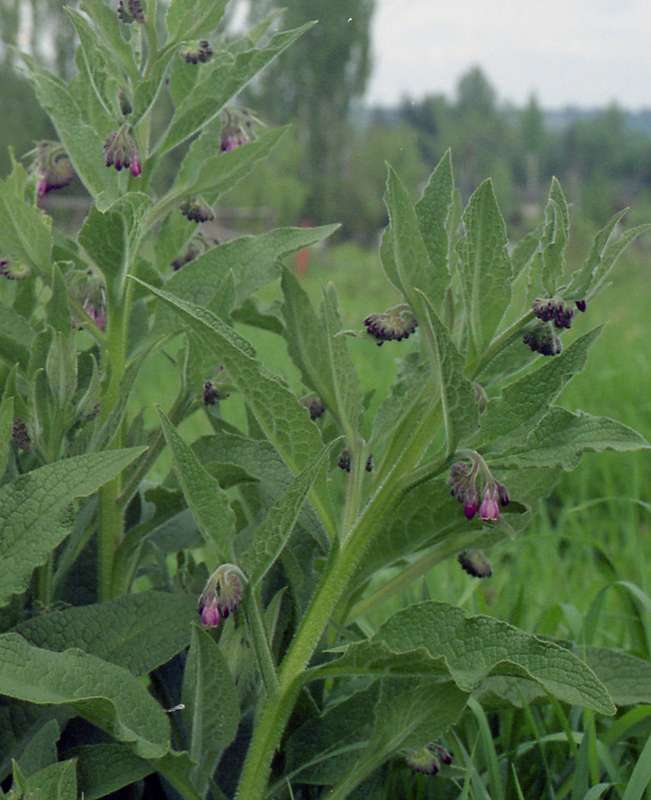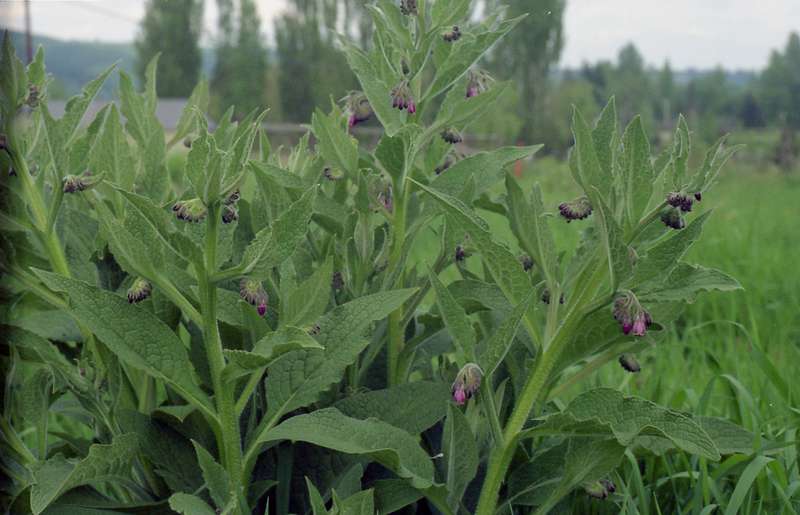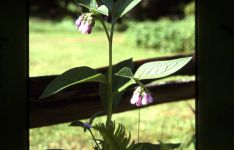Distribution: Occurring in scattered locations east of the Cascades crest in Washington; Alaska to Oregon, and in scattered locations elsewhere in North America.
Habitat: Roadsides and other disturbed habitats.
Flowers: May-July
Origin: Introduced from Asia
Growth Duration: Perennial
Conservation Status: Not of concern
Pollination: Bees, flies
Coarse perennial from a taproot, the several erect stems 3-12 dm. tall; hairs of the stem and inflorescence stout and stiff, flattened, often recurved.
Basal leaves large, petiolate, the blade ovate or lance-ovate, 15-30 cm. long and 7-12 cm. wide; cauline leaves ample, gradually reduced upward and becoming sessile.
Inflorescence of several small, naked clusters at the branch tips; calyx 5-7 mm. long, cleft to below the middle into 5 lobes; corolla blue, 1.8 cm. long, bell-shaped, the throat much longer than the 5 lobes; the 5 hairy appendages at the top of the corolla tube narrow and elongate; style exerted; nutlets attached at the base in a pit
Nutlets 4, slightly wrinkled, keeled, 4 mm. long, brownish-black, with a basal attachment.
Publication: Ber. Thätigk. St. Gallischen Naturwiss. Ges. 1876--77: 296 (Gen. Sp. Musc. 2: 1114). 1878.
PNW Herbaria: Specimen records of Symphytum asperum in the Consortium of Pacific Northwest Herbaria database
WA Flora Checklist: Symphytum asperum checklist entry
OregonFlora: Symphytum asperum information
E-Flora BC: Symphytum asperum atlas page
CalPhotos: Symphytum asperum photos






